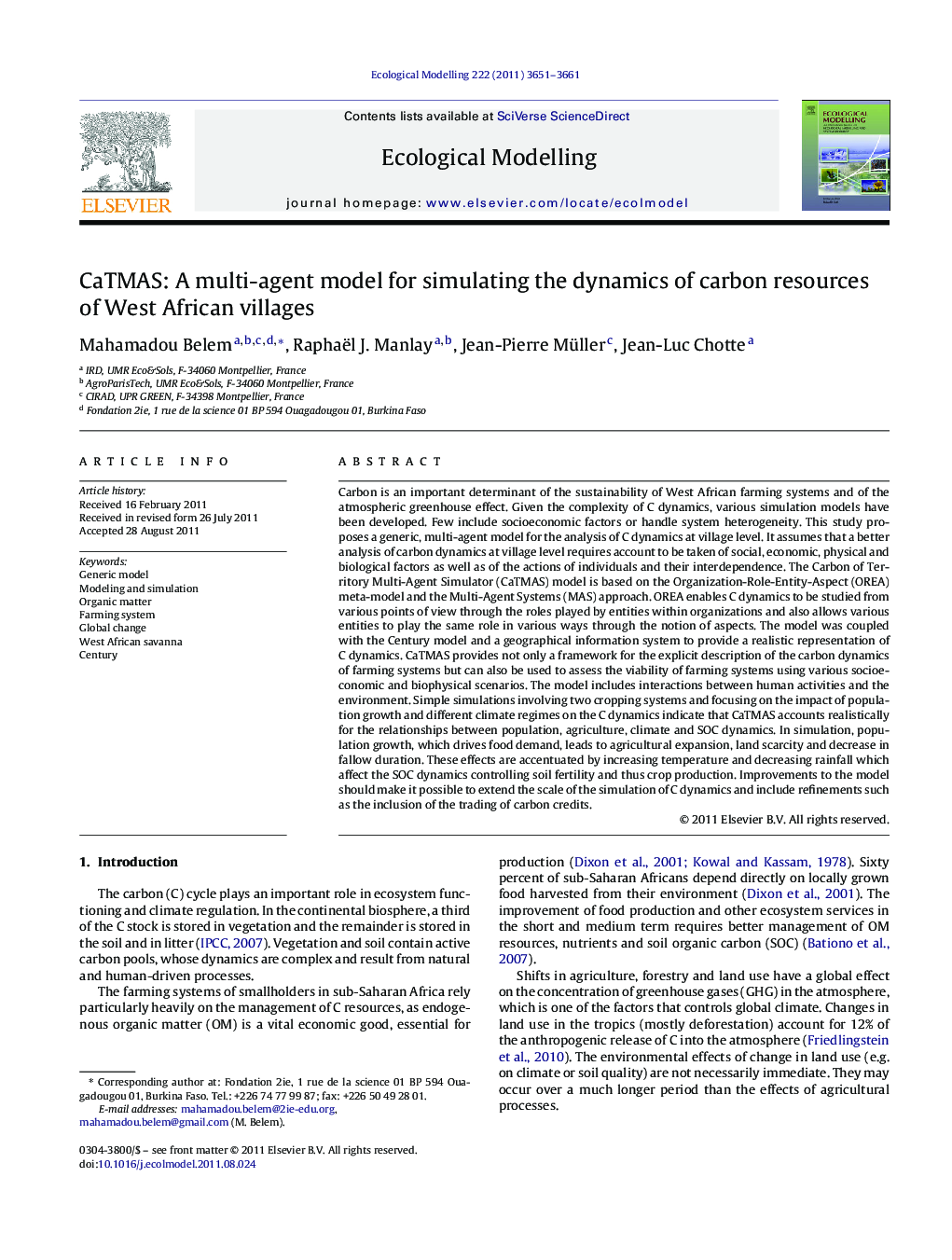| کد مقاله | کد نشریه | سال انتشار | مقاله انگلیسی | نسخه تمام متن |
|---|---|---|---|---|
| 4376614 | 1617520 | 2011 | 11 صفحه PDF | دانلود رایگان |

Carbon is an important determinant of the sustainability of West African farming systems and of the atmospheric greenhouse effect. Given the complexity of C dynamics, various simulation models have been developed. Few include socioeconomic factors or handle system heterogeneity. This study proposes a generic, multi-agent model for the analysis of C dynamics at village level. It assumes that a better analysis of carbon dynamics at village level requires account to be taken of social, economic, physical and biological factors as well as of the actions of individuals and their interdependence. The Carbon of Territory Multi-Agent Simulator (CaTMAS) model is based on the Organization-Role-Entity-Aspect (OREA) meta-model and the Multi-Agent Systems (MAS) approach. OREA enables C dynamics to be studied from various points of view through the roles played by entities within organizations and also allows various entities to play the same role in various ways through the notion of aspects. The model was coupled with the Century model and a geographical information system to provide a realistic representation of C dynamics. CaTMAS provides not only a framework for the explicit description of the carbon dynamics of farming systems but can also be used to assess the viability of farming systems using various socioeconomic and biophysical scenarios. The model includes interactions between human activities and the environment. Simple simulations involving two cropping systems and focusing on the impact of population growth and different climate regimes on the C dynamics indicate that CaTMAS accounts realistically for the relationships between population, agriculture, climate and SOC dynamics. In simulation, population growth, which drives food demand, leads to agricultural expansion, land scarcity and decrease in fallow duration. These effects are accentuated by increasing temperature and decreasing rainfall which affect the SOC dynamics controlling soil fertility and thus crop production. Improvements to the model should make it possible to extend the scale of the simulation of C dynamics and include refinements such as the inclusion of the trading of carbon credits.
► We model carbon dynamics at village level in West African savanna.
► A generic model based on multi-agent system and coupling with Century and GIS.
► The model includes interactions between human activities and the environment.
► It can be used to study the impacts of population growth on C dynamics and vice versa.
► We simulate the impacts of two cropping systems and climate change on the C dynamics.
Journal: Ecological Modelling - Volume 222, Issues 20–22, October–November 2011, Pages 3651–3661